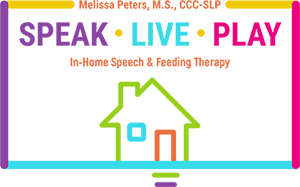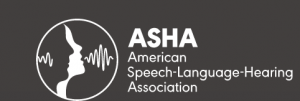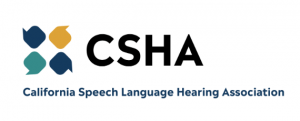Childhood Apraxia of Speech
Childhood apraxia of speech (CAS) is a relatively uncommon condition that hinders a child’s speech abilities. It impacts only a small fraction, approximately 1-2 per 1000 children. When a child has apraxia, their brain has trouble communicating with the muscles in their mouth. It’s important to know that children with apraxia are not weak, and they know what they want to say. Unfortunately, this is not something they outgrow, but with the right treatment, they can get better at speaking.
Childhood apraxia of speech, also known as apraxia of speech, is a tricky condition, but there’s hope. We can help! With the right treatment, children with apraxia can make improvements and become better speakers. Don’t worry; we’re here to support you every step of the way.
Recognizing the Indicators and Manifestations of Childhood Apraxia of Speech
Childhood Apraxia of Speech symptoms can vary among children and change with age. The primary indicators at different stages are as follows:
- 18 to 24 months: Early signs of childhood apraxia of speech may include delayed use of first words and limited ability to produce consonant and vowel sounds effectively.
- 2 to 4 years: Distortions of consonants and vowels, along with pauses in syllables, are commonly observed.
Additional symptoms can include:
- Inconsistent production of vowel sounds.
- The child may exhibit variability when attempting to produce the same word multiple times.
- Awkward movements when transitioning between sounds.
- Trial-and-error behavior during speech production.
- Limited babbling.
- Adding extra sounds or syllables within words.
- Fast or slow breakdown of word segments.
- Challenges with feeding during infancy.
It is important to note that these symptoms may manifest differently in each child and may require individualized attention and support.
Treatment for Childhood Apraxia of Speech
Childhood apraxia of speech treatment is all about helping kids speak clearly. We use fun activities to teach them how to make sounds and put them together to form words and sentences. It’s like playing a game to improve their coordination and how they say different sounds. We want to make sure they can move their mouth and tongue in the right way at the right time. This kind of therapy is really important for children with childhood apraxia of speech or apraxia of speech. It helps them get better at talking and moving their mouth to make sounds. So, if you know someone with childhood apraxia of speech or apraxia of speech, let them know there are ways to get help and improve their speech skills!
A speech-language pathologist, also known as an SLP, is a specialist who creates a special plan to help your child with their talking. The SLP uses clever ways to help your child learn, like doing activities that use their muscles and senses. For treating a condition called childhood apraxia of speech, it’s important to practice a lot. The experts say that the best way is to have ten sessions every week, each lasting thirty minutes. But if you can’t do that many, at least try to have five sessions each week. Childhood apraxia of speech, also known as apraxia of speech, refers to the challenge children face when expressing their desired words. Childhood Apraxia of Speech symptoms can vary from child to child and may differ based on age.
Here are the key symptoms observed at different ages:
– Between 18-24 months: Early signs may include delays. It’s important to work with an SLP to get better and improve your talking skills!
What is childhood apraxia of speech 250?
- Childhood apraxia of speech, also known as apraxia of speech, is a motor speech condition that impacts how we talk. It affects our ability to control the movement of our jaw, tongue, and lips to produce speech correctly. It’s like having a little traffic jam in our brain, making it hard for the right signals to get through and coordinate our speech muscles. This condition requires special attention and therapy to help improve speech abilities. If you or someone you know struggles with childhood apraxia of speech, remember that with the right support and treatment, progress can be made!
What is the prevalence rate of childhood apraxia of speech?
- Childhood apraxia of speech, also known as apraxia of speech, is a condition that is not very common. It affects about 1 to 2 children out of every 1,000, which is equivalent to 0.1% to 0.2%. In simpler terms, it means that out of a thousand children, only a few may have this condition. It’s important to understand that childhood apraxia of speech can make it difficult for kids to speak clearly. Suppose you or someone you know is experiencing challenges with speaking. In that case, it might be helpful to learn more about this condition and seek appropriate support. Remember, you are not alone, and there are resources available to help you navigate through this journey.
What causes childhood apraxia of speech 60?
- Childhood apraxia of speech (CAS) and apraxia of speech (AOS) can occur when there is damage to the brain caused by a syndrome or a genetic disorder. Sometimes, we need to figure out why it happens. These conditions make it harder for some people to speak clearly and correctly. It’s like having trouble with the signals between the brain and the mouth. So, when we talk, our brains don’t always tell our mouths what to do. This can make talking difficult and frustrating. But with the right help and support, people with CAS and AOS can learn to communicate effectively and overcome these challenges.
How do you treat childhood apraxia of speech 30?
- Speech-language therapy is the primary treatment for childhood apraxia of speech, also known as apraxia of speech. This specialized therapy aids children in enhancing their speech clarity and effectiveness. Collaborating with a skilled speech-language therapist equips children with the essential skills to conquer the challenges linked to childhood apraxia of speech.
How do you diagnose childhood apraxia of speech 20?
- Only an expert SLP can make a diagnosis of childhood apraxia of speech. The SLP examines the child’s intonation, oral-motor skills, and how he can say different sounds.
Why Speak Live Play?
At Speak Live Play, individuals experiencing Childhood Apraxia of Speech (CAS) often have a better understanding of language than their ability to articulate it. Our specialists initiate the assessment process with a thorough hearing evaluation to rule out any potential contribution to hearing loss. Subsequently, our Speech-Language Pathologists (SLPs) conduct a comprehensive evaluation of the patient’s speech development to identify the extent of the issue. Our primary focus lies on intervention and therapy aimed at assisting patients in planning, sequencing, and coordinating the movements required for speech production.
The speech therapists at Speak Live Play have undergone rigorous training and possess extensive expertise to deliver personalized services tailored to the unique strengths and needs of each individual. We provide a thorough evaluation, customized treatment plans, and targeted speech practice. Moreover, we offer educational support to parents and caregivers of individuals with CAS, empowering them to create an environment conducive to improving their loved one’s speech. At Speak Live Play, we take pride in delivering expert care that is tailored to the specific needs of each patient.



